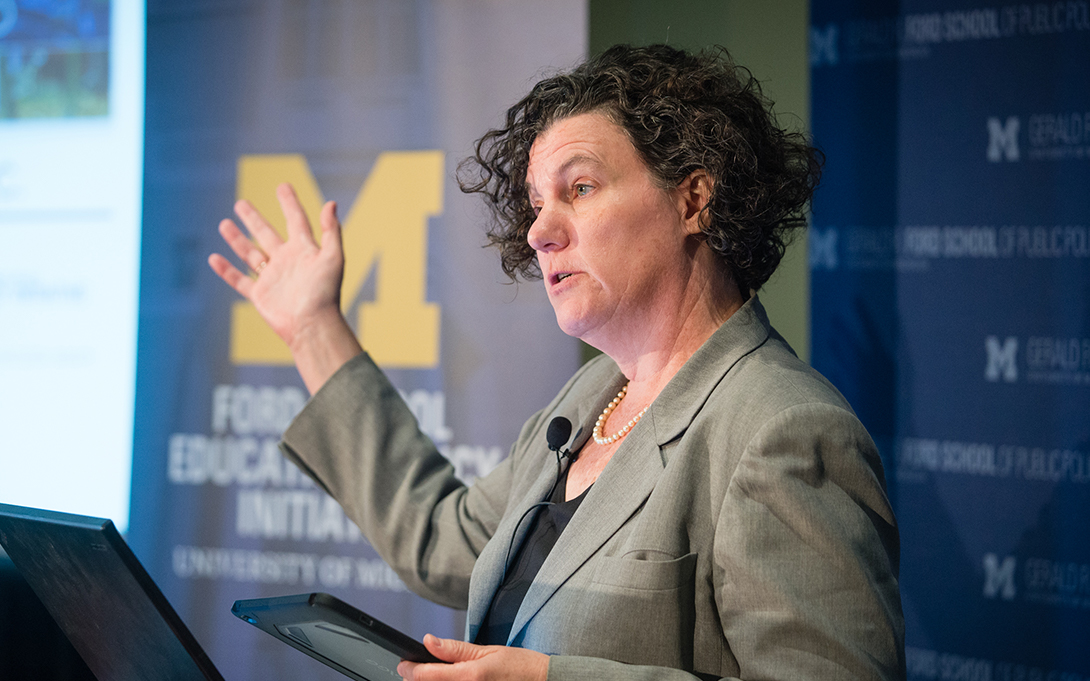
For most students, the school year ended in March, according to a New York Times commentary by Ford School professor Susan Dynarski. She outlines both the education lost for American students from school closures and what will need to be done to fill the void in wake of the coronavirus pandemic.
Online learning and worksheets won’t replace educators in the classroom, she says, and lost time now will likely result in “a generation of children who will learn less than those who went before them.” Further, the pandemic has exposed the “enormous gaps in schools’ and families’ capacity to support children’s learning.” If not mitigated, the long term impact will mean poorer reading and writing outcomes, reduced graduation rates, a shortage of highly trained workers, diminished economic recovery, and intensified earnings inequality.
Dynarski acknowledges that educators, parents, and students are doing the best they can in a challenging position, but, she says the scale of the problem - some $133 billion (roughly equivalent to the Marshall Plan in today’s dollars) - is too just too large for communities or states to handle alone. It requires a federal response.
To mitigate the educational losses, Dynarski put forward options including summer school (for places where it is safe to reopen by summer), and extended school days and weeks with students rotating between days in teacher-led classrooms and small group tutoring. She also highlighted an opportunity to tap the unused energy and talent of young people by funding a large domestic volunteer effort - akin to Americorps - to support tutoring, troubleshoot tech, assist teachers, and disinfect classrooms. All of these measures are in addition to a continued need to make online instruction as effective as possible.
“The future I fear is one in which a privileged minority of children are well educated, using private resources like tutors, private schools and homeschooling, while the vast majority that depend on the public schools are left even further behind,” Dynarski writes. “For most children, the school year ended in March. The sooner we face it, the faster we can fix it.”
To read the full New York Times article, “The School Year Really Ended in March”, you can find it here.
Susan Dynarski is a professor of public policy, education, and economics at the Gerald R. Ford School of Public Policy, School of Education, and Department of Economics. She is co-founder and co-director of the Ford School’s Education Policy Initiative, which engages in applied, policy-relevant research designed to improve educational achievement and outcomes. In 2019, Dynarski was named one of nine inaugural recipients of the University of Michigan Distinguished Diversity & Social Transformation Professorship. Dynarski has been a visiting fellow at the Federal Reserve Bank of Boston and Princeton University as well as an associate professor at Harvard University. She is a former editor of The Journal of Labor Economics and Educational Evaluation and Policy Analysis. She has been elected to the board of the Association for Public Policy and Management. She serves on the board of the Association for Education Finance and Policy and is a past president. The Association for Public Policy and Management awarded her the Spencer Foundation Award for excellence in research in 2017. The National Association of Student Financial Aid Administrators awarded her the Robert P. Huff Golden Quill Award for excellence in research on student aid. The Chronicle of Higher Education named her a "Top Ten Influencer" in 2015. She writes frequently for the New York Times.
